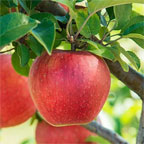- Q.Rhizobium - Where can I buy Rhizobium or nitrogen fixing nodules/bacteria for a garden? I live in Pointe-Claire, Quebec.
- Q.What Kind Of Bugs - I have Kentucky Wonder beans growing up along a fence line in our backyard. The grass has all been taken ...
- Q.How To Blanch Beans - I was told to blanch my green beans before vacuum sealing them. I don't know what that means or how ...
- Q.Growing Bigger Beans - Why do my beans stop growing when they are 2 inches long and are supposed to grow to 4 to ...
- Q.Over-Fertilized Vegetables - I watered my garden, then put double the directed amount of Schultz tomato food on it (it was 17-18-28 fast- ...
- Q.Why Beans Won’t Flower - I have a bean plant that is growing, but there are no flowers on the plant. What would cause this, ...
- Q.Beans Dropping Leaves - For the last three years, my Roma and October (cranberry) beans have started dropping some of their upper leaves and ...
Q.Rhizobium
Where can I buy Rhizobium or nitrogen fixing nodules/bacteria for a garden? I live in Pointe-Claire, Quebec.
- A.
Different strains of rhizobia bacteria exist, so be sure to purchase a packet of inoculant that is formulated for your particular need. Most well-stocked nurseries carry incoulant or it can be ordered online from seed catalogs and farm or agricultural suppliers.
Was this answer useful?00
Q.What Kind of Bugs
I have Kentucky Wonder beans growing up along a fence line in our backyard. The grass has all been taken out. But my problem is bugs are eating the beans! How do I know what to put on the beans to keep bugs off if I don't even know what kind of bugs is eating them?
- A.
Most actual bugs are all susceptible to insecticide, so you can treat the plants with an insecticide (organic or chemical) and it will kill the bugs, but I am not sure that it is a bug that is after your beans.
Bugs tend to attack stems and leaves rather than the beans. If you are not seeing the "bugs" then it very well could be slugs or rodents who are doing the damage. They come out at night, so you would not see them on the plants during the day. These articles will help:
https://www.gardeningknowhow.com/plant-problems/pests/facts-about-slugs-and-how-to-kill-garden-slugs.htmhttps://www.gardeningknowhow.com/plant-problems/pests/animals/garden-mouse-control.htm
Was this answer useful?00 Q.How to Blanch Beans
I was told to blanch my green beans before vacuum sealing them. I don't know what that means or how to do it.
- A.
Blanching is quickly bringing your vegetables to boiling (without cooking it) to stop the chemical processes that will toughen the vegetable. Pop those beans in rapidly boiling water for three minutes - a fry basket is great for this - and then dump them in ice water to stop the cooking. Pat dry and Voila!
Was this answer useful?00 Q.Growing Bigger Beans
Why do my beans stop growing when they are 2 inches long and are supposed to grow to 4 to 6 inches long?
- A.
Your beans may be nutrient deficient. If you're fertilizing regularly, check the underside of the leaves for pests. If there is any discoloration, you may be dealing with a fungus. If all is normal, you may have gotten a bad batch of seeds.
Was this answer useful?00 Q.Over-Fertilized Vegetables
I watered my garden, then put double the directed amount of Schultz tomato food on it (it was 17-18-28 fast- acting water soluble) -- putting 2 tbls to 2 gals water on my blooming peas, beans, tomatoes, and cukes. My question is: Will these vegetables be safe to eat in a couple of weeks when I expect the beans and peas to be ready to pick? And yes, I should read better, but are they safe?
- A.
Yes, they will be safe to eat. Really, the reason those limits are put on the label is for 2 reasons that have nothing to do with food safety.
1. Too much fertilizer can burn and injure the plants. You would have seen damage (brown, dying plants) in just a day or so if this had happened.
2. The excess fertilizer gets washed away with the rain and into runoff streams, where it can harm the environment.
One time is not likely to harm the plants or the environment, so you are ok.
Was this answer useful?00 Q.Why Beans Won’t Flower
I have a bean plant that is growing, but there are no flowers on the plant. What would cause this, and is there something I can do to get the plant to flower and produce bean?
- A.
I would try giving them some bone meal to give them the phosphorous they need to bloom and fruit. You can also purchase a fertilizer higher in phosphorus. A good ratio is 10-20-10.
Was this answer useful?00 Q.Beans Dropping Leaves
For the last three years, my Roma and October (cranberry) beans have started dropping some of their upper leaves and blossoms as the beans mature. They quit producing and my butter beans start and just keep on until frost. Can you tell me what is wrong with the plants?
- A.
Your beans may have a virus that overwinters in your soil. Next year, try fresh seed and a new spot in the garden.
Was this answer useful?00



